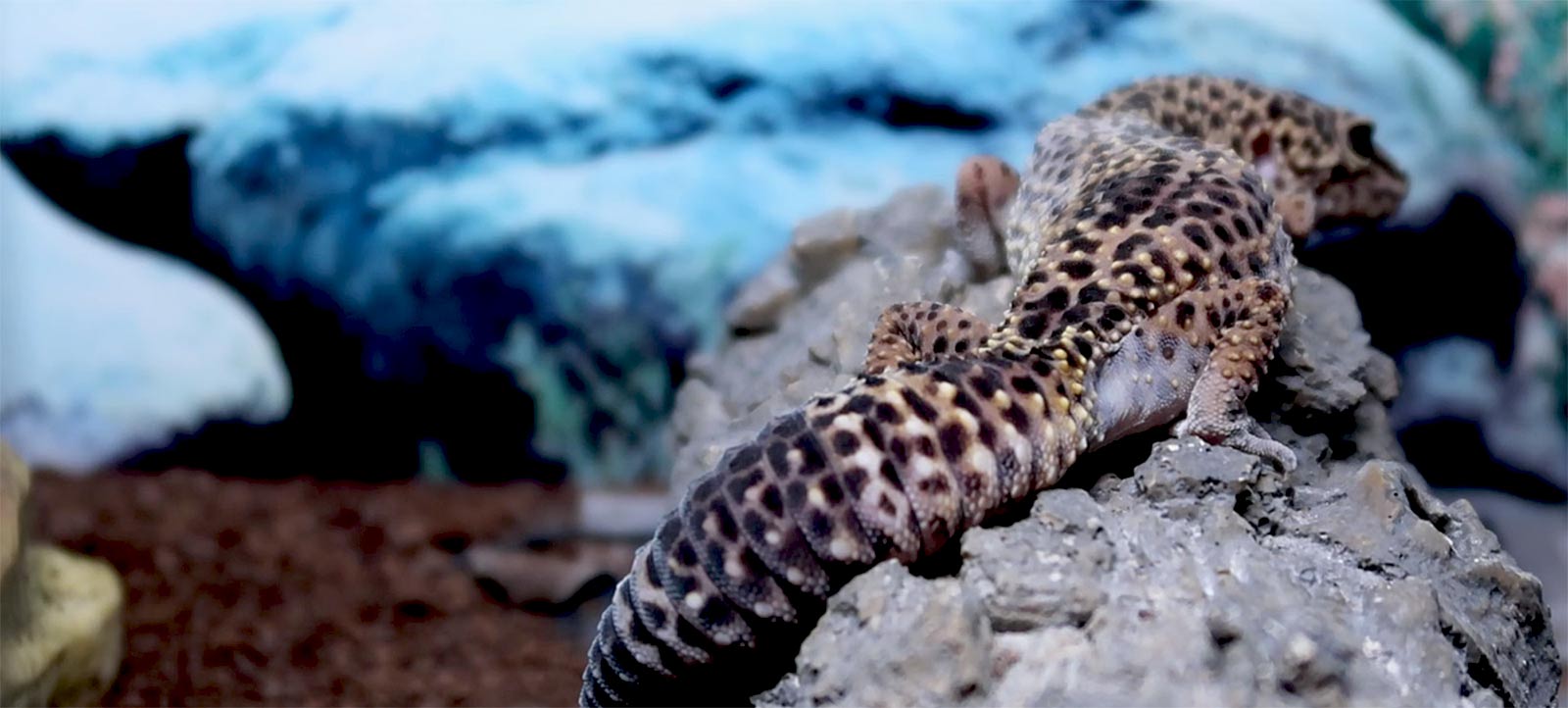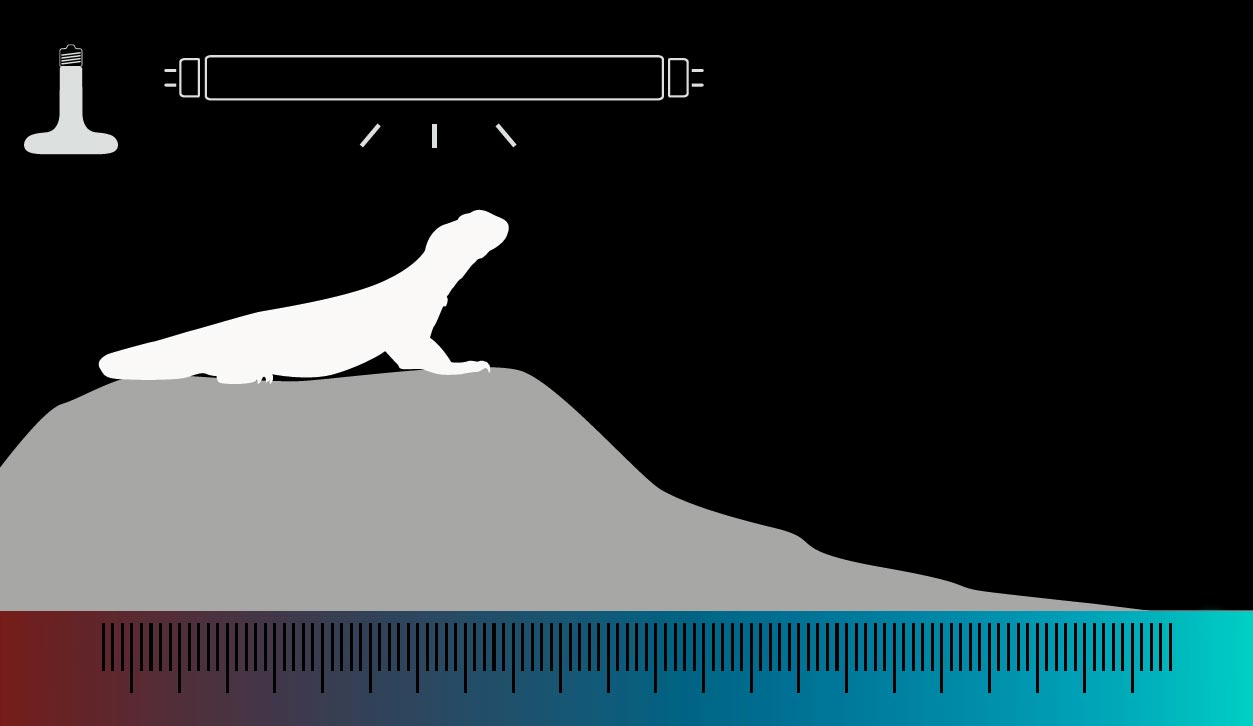
The Light and Shade Method
Reptiles need a thermal gradient to be able to regulate their own temperature. This is a basic Guide to setting up a thermal gradient in an enclosure.
Maintaining a higher temperature at one end of the vivarium, whilst maintaining a lower temperature at the opposite end of the vivarium, is the basis of reptile care. The light and shade method improves upon this approach as it also includes the provision of the correct quantity of full-spectrum+UVB light as part of the gradient to create usable zoning of ‘heat and light’ to ‘cool and shade’.
The sun projects all of the terrestrial wavelengths of light from UVB to Infra-Red-B into our world. This is a single source of energy, supplying us all with heat, visible light and UV. It is therefore important that we do not split up heat and light sources within captivity.

Heating and lighting systems should be grouped closely together in a safe way so that both the heat and light are directed onto the basking zone together. In this way the animal can utilise the energy naturally, self-regulating its own exposure as it has need.
We then separate the warmer basking area from the cooler, more humid end of the enclosure. Zoning is vital to the correct supply of re-created terrestrial light. This will allow an animal to ‘self-select’ or ‘self-regulate’ its own level of exposure within its own biological cycles, from controlled heat and Full-Spectrum light to cool and shade, just as it would in the wild.
If the light and shade method is implemented and you provide plenty of hiding places then the animal will be able to alter its position within the vivarium or terrarium and choose where to bask. This is the principle of ‘Wild Re-creation®’.
